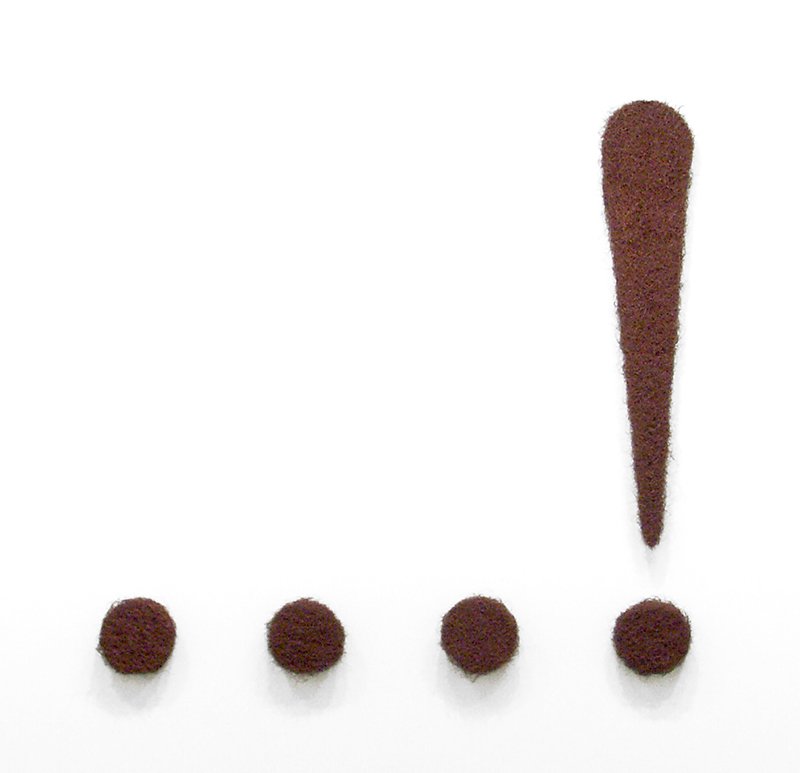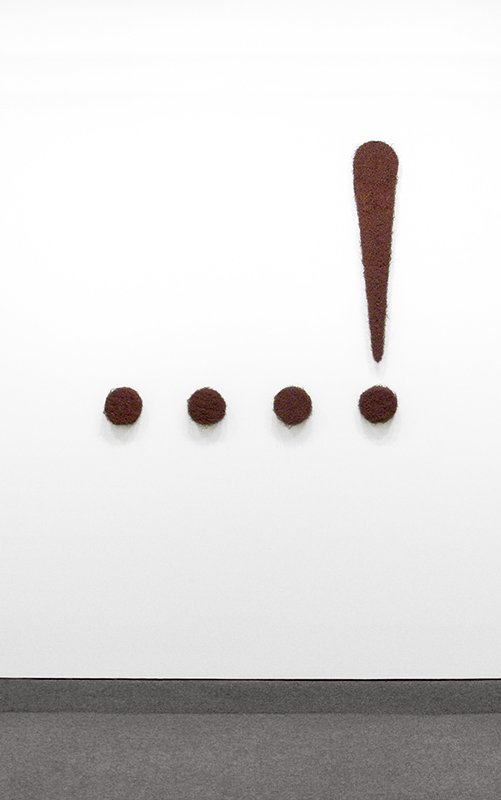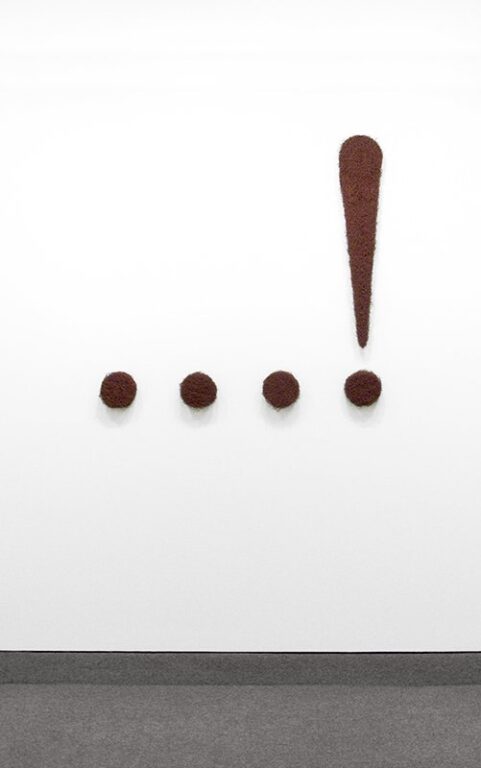


Edition of 12, AP 1/6
Overall size: 38 x 41 1/2 x 2 inches (96.5 x 105.4 x 5.1 cm)
Signed and numbered on the reverse
(Inventory #30721)
Edition of 12, AP 1/6
Overall size: 38 x 41 1/2 x 2 inches (96.5 x 105.4 x 5.1 cm)
Signed and numbered on the reverse
(Inventory #30721)

The work of Richard Artschwager does not take to labels easily, as it incorporates and/or quotes elements of conceptualism, minimalism, pop, photorealism, and Surrealism, among others.
Adam Weinberg, director of the Whitney Museum of American art, described Artschwager’s punctuation marks by saying, “they appear as humorous, sensuous forms yet mute ones, detached from the dramatic feeling or sound that they would imply in a text. Decontextualizing the emotion associated with the mark contradictorily summons an existential loneliness.”
Artschwager, himself, stated, “I’m not talking about the apparatus, I’m talking about our being in a primarily social, as opposed to primarily physical, space. Social space is language-bound and language is always subject-predicate, a Procrustean abridgment of the event which, for instance, allows no excluded middle. Just think back to that time when people lived in the country. One didn’t look at red and green lights in other words, particles in order to cross the street, but rather at the full field of vision. And so it is with Matisse. When you sweep your eyes over it, you’re seeing it as it was intended to be seen. It’s so simple.”
The sculptures of punctuation marks in the current exhibition are physically silent objects, separated from the written context and yet they have the opportunity to comment on all that is around.
Richard Artschwager (1923-2013) was an American sculptor and painter. During the 1950s he designed and made furniture in New York, but after a fire that destroyed most of the contents of his shop in 1958 he turned again to art, initially painting abstract pictures derived from memories of the New Mexican landscape.
Artschwager had the idea of producing sculptures that mimicked actual objects while simultaneously betraying their identity as artistic illusions. At first these included object trouvés made of wood, overpainted with acrylic in an exaggerated wood-grain pattern, but he soon developed more abstract or geometrical versions of such objects formed from a veneer of formica on wood. His preference for synthetic materials considered to be in debased taste together with his references to everyday objects were central to his response to Pop art. Similarly his blocklike sculptures had much in common formally with Minimalism.
From 1962, Artschwager also painted grey acrylic monochrome pictures, basing his images on black-and-white photographs, characteristically of modern buildings as shown in property advertisements, as in Apartment House (1964; Cologne, Mus. Ludwig). Gradually his paintings became more complex and mysterious, the surface subsumed in a pattern of flickering light, for example in “The Bush” (1.22 x 1.79 m, 1971; New York, Whitney). His emphasis, however, remained on ambiguities of perception-on the interaction of observation and illusion-especially in sculptures conceived as hybrids of recognizable objects, such as Book III (Laokoon; formica on wood with metal handles and vinyl cushion, 1981; Paris, Pompidou), part lectern and part pew.
—
E.C. Baker: ‘Artschwager’s Mental Furniture’, A. News, 66 (1968), pp. 48-9, 58-61.
Richard Artschwager’s Theme(s) (exh. cat., essays R. Armstrong, L.C. Cathcart and S. Delehanty; Buffalo, Albright-Knox A.G.; Philadelphia, U. PA, Inst. Contemp. A.; La Jolla, CA, Mus. Contemp. A.; Houston, TX, Contemp. A. Mus.; 1979)
Artschwager, Richard (exh. cat. by R. Armstrong, New York, Whitney; San Francisco, CA, MOMA; Los Angeles, CA, Mus. Contemp. A.; 1988-9)
Marco Livingstone; Copyright material reproduced courtesy of Oxford University Press, New York
10 Newbury Street, Boston, Massachusetts 02116
617-262-4490 | info@krakowwitkingallery.com
The gallery is free and open to the public Tuesday – Saturday, 10am – 5:30pm